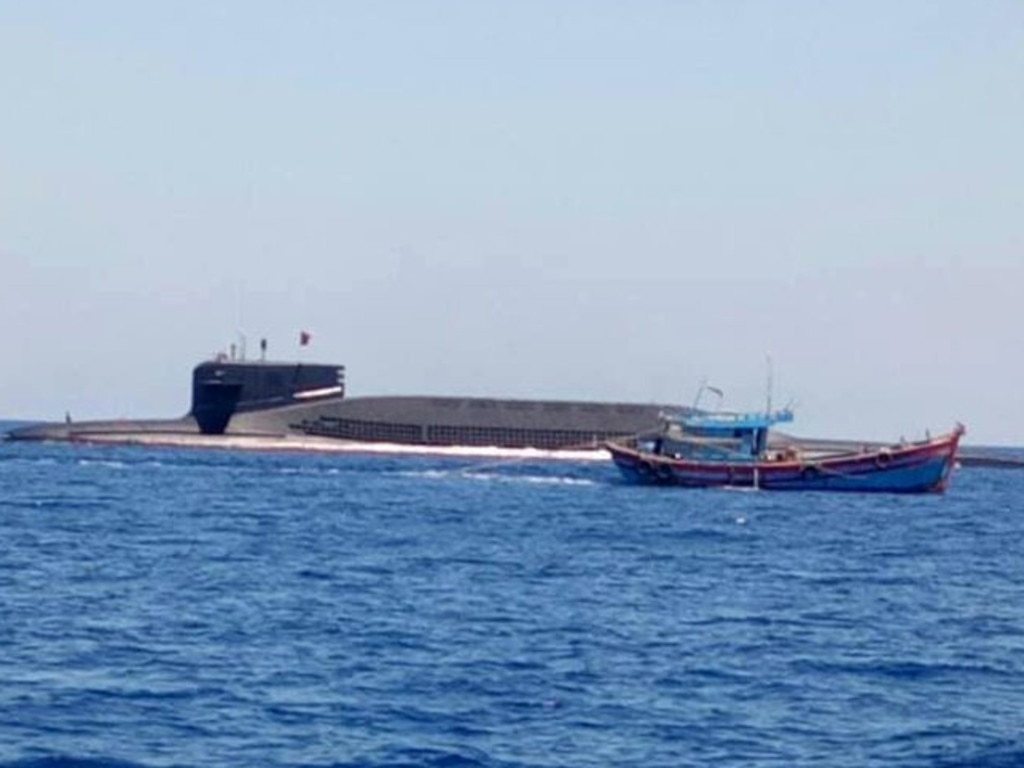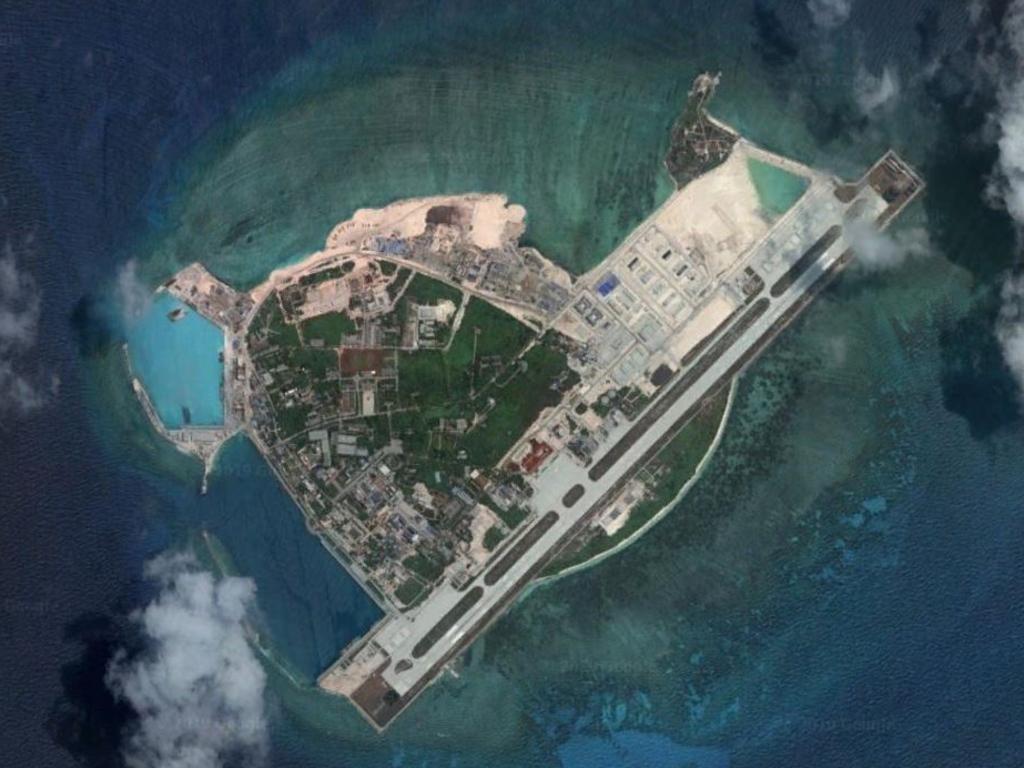‘Highly unusual event’: Chinese nuclear sub in ‘embarrassing’ South China Sea incident
An enormous nuclear submarine has mysteriously surfaced in the disputed South China Sea in what experts have described as a ‘highly unusual event’.
An enormous nuclear missile submarine has mysteriously surfaced among Vietnamese fishing boats in the South China Sea as Beijing knuckles down on its territorial grab.
According to international submarine warfare analyst H.I. Sutton, the Chinese 11,000-ton Type 094 Jin Class submarine suddenly emerged from the deep among a fishing fleet operating off the Paracel Islands.
It’s a highly unusual event.
Was it a deliberate act of intimidation? Or an accident embarrassingly seen by competitors?
The single purpose of ballistic-missile carrying, nuclear-powered submarine such as the Jin Class is to remain underwater for months on end. To remain unseen. To be enough of a menace to deter any surprise attack.
Mr Sutton says using such a submarine to “send a message” to Vietnam goes against all expectations.
“Surfacing next to another country’s vessel is unusual and suggests that something has gone wrong,” he writes. “Something serious enough to warrant sacrificing its main asset: stealth.”

TIGHTENING THE CHAIN
The appearance of the submarine does emphasise, however, one of Beijing’s prime motivators for laying claim over what it calls the “Nine-Dash Line”, or “First Island Chain”. In essence, it is the entire mass of water between it and Taiwan, the Philippines, Malaysia and Vietnam.
Its string of illegally constructed artificial island fortresses turns the entire area into a Chinese-controlled lake. Entry through the narrow island choke-points can be closely monitored. And its nuclear submarines can hide in its depths, secure in the knowledge that any opposing submarine or aircraft will find it challenging to break in.
“The Jin Class is the newest missile submarine in the Chinese arsenal,” Mr Sutton writes in Forbes . “Six have been built and are already the backbone of China’s at-sea nuclear deterrent.”
The fishing boat scare has only just been revealed in Vietnamese media after the incident occurred last month.
“Possibly the submarine had become entangled in a fishing net, or feared that it would be,” Mr Sutton writes. “Surfacing may have saved the lives of the fishermen, or the submariners.”
The submarine surfaced more than 300km from its home base at Sanya on the Chinese island of Hainan.

Chinese navy controlled Coast Guard and survey vessels have been engaged in an extended standoff with Vietnam in the area in recent months. A Vietnamese-Russian gas and oil drilling operation has been the centre of an interference operation, with China attempting to assert its ownership of a region called the Vanguard Bank.
“China is expanding its grip on the resource-rich sea, but has been careful enough to do this gradually, step by step,” geopolitical affairs analyst Bahauddin Foizee writes. “This slow approach attracts lesser outcry from the international community. Using time as a weapon, China is slowly expanding its grip.”
GROWING RESISTANCE
The cluster of about 130 small coral islands and reefs that forms the Paracel Islands covers some 15,000sq km roughly halfway between the Chinese mainland and Vietnam. The People’s Liberation Army of China expelled Vietnamese forces from the area during a short war in 1974.
Vietnam has never relinquished its claim to the territory, even though Beijing has built a fortress-air base on one of the largest land masses — Woody Island.
Vietnam earlier this week told a South China Sea forum being held between ASEAN nations and China that ongoing territorial infringements were harming the region.
Deputy Foreign Minister Nguyen Quoc Dung said “complicated developments” had strained discussions around China’s proposed South China Sea “Code of Conduct”.
Mr Nguyen asserted Vietnam’s right under the United Nations Law of the Sea to an exclusive economic zone (EEZ) based on its shores and continental shelf. Beijing, a signatory to the law, rejects this — and instead insists it owns the entire South China Sea right up to the coasts of neighbouring nations.
But, at the weekend, Vietnam’s Chairman Nguyen Phu Trong said he was “prepared for possible opportunities and challenges” in the South China Sea where he would “tenaciously” defend his nation’s rights.
Of particular concern was the sighting of a Chinese oil drilling rig moving into waters contained within Vietnam’s EEZ. Similar Chinese interference actions have been noted in Malaysian and Philippine waters in recent months.

But Beijing’s growing assertiveness appears to have backfired.
Now, the previously reticent ASEAN group of nations appears to be digging in its heels.
In September, 10 ASEAN nations engaged in an unusual and rare naval exercise with the United States.
Five days of joint exercise involved eight warships, four aircraft and 1000 personnel and ranged through the Gulf of Thailand, South China Sea and Malacca Strait.
“ASEAN has long demurred from such action, limited as it was,” Bahauddin Foizee writes.
“Although there has been speculation that the association might gradually evolve into a security alliance, that is a far cry from what it as a bloc intends to achieve. However, security alliances among some of the ASEAN member states and some extra-ASEAN countries like Australia, India and Japan cannot be ruled out.”
Jamie Seidel is a freelance writer @JamieSeidel



